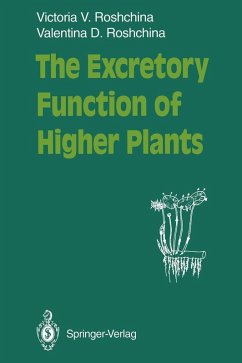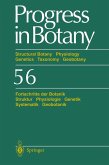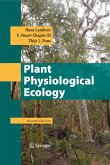73,95 €
73,95 €
inkl. MwSt.
Sofort per Download lieferbar

37 °P sammeln
73,95 €
Als Download kaufen

73,95 €
inkl. MwSt.
Sofort per Download lieferbar

37 °P sammeln
Jetzt verschenken
Alle Infos zum eBook verschenken
73,95 €
inkl. MwSt.
Sofort per Download lieferbar
Alle Infos zum eBook verschenken

37 °P sammeln
- Format: PDF
- Merkliste
- Auf die Merkliste
- Bewerten Bewerten
- Teilen
- Produkt teilen
- Produkterinnerung
- Produkterinnerung

Bitte loggen Sie sich zunächst in Ihr Kundenkonto ein oder registrieren Sie sich bei
bücher.de, um das eBook-Abo tolino select nutzen zu können.
Hier können Sie sich einloggen
Hier können Sie sich einloggen
Sie sind bereits eingeloggt. Klicken Sie auf 2. tolino select Abo, um fortzufahren.

Bitte loggen Sie sich zunächst in Ihr Kundenkonto ein oder registrieren Sie sich bei bücher.de, um das eBook-Abo tolino select nutzen zu können.
- Geräte: PC
- ohne Kopierschutz
- eBook Hilfe
- Größe: 50.92MB
Andere Kunden interessierten sich auch für
![General Index (eBook, PDF) General Index (eBook, PDF)]() General Index (eBook, PDF)73,95 €
General Index (eBook, PDF)73,95 €- -22%11
![Lehrbuch der Pflanzenphysiologie (eBook, PDF) Lehrbuch der Pflanzenphysiologie (eBook, PDF)]() S. KostytschewLehrbuch der Pflanzenphysiologie (eBook, PDF)42,99 €
S. KostytschewLehrbuch der Pflanzenphysiologie (eBook, PDF)42,99 € ![Progress in Botany (eBook, PDF) Progress in Botany (eBook, PDF)]() H. -Dietmar BehnkeProgress in Botany (eBook, PDF)73,95 €
H. -Dietmar BehnkeProgress in Botany (eBook, PDF)73,95 €![Physiological Ecology of North American Desert Plants (eBook, PDF) Physiological Ecology of North American Desert Plants (eBook, PDF)]() Stanley D. SmithPhysiological Ecology of North American Desert Plants (eBook, PDF)40,95 €
Stanley D. SmithPhysiological Ecology of North American Desert Plants (eBook, PDF)40,95 €![Plant Physiological Ecology (eBook, PDF) Plant Physiological Ecology (eBook, PDF)]() Hans LambersPlant Physiological Ecology (eBook, PDF)73,95 €
Hans LambersPlant Physiological Ecology (eBook, PDF)73,95 €![Microautoradiography and Electron Probe Analysis (eBook, PDF) Microautoradiography and Electron Probe Analysis (eBook, PDF)]() Microautoradiography and Electron Probe Analysis (eBook, PDF)73,95 €
Microautoradiography and Electron Probe Analysis (eBook, PDF)73,95 €![Model Systems to Study the Excretory Function of Higher Plants (eBook, PDF) Model Systems to Study the Excretory Function of Higher Plants (eBook, PDF)]() Victoria V. RoshchinaModel Systems to Study the Excretory Function of Higher Plants (eBook, PDF)73,95 €
Victoria V. RoshchinaModel Systems to Study the Excretory Function of Higher Plants (eBook, PDF)73,95 €-
-
-
Produktdetails
- Verlag: Springer Berlin Heidelberg
- Seitenzahl: 314
- Erscheinungstermin: 6. Dezember 2012
- Englisch
- ISBN-13: 9783642781308
- Artikelnr.: 53140545
Dieser Download kann aus rechtlichen Gründen nur mit Rechnungsadresse in A, B, BG, CY, CZ, D, DK, EW, E, FIN, F, GR, HR, H, IRL, I, LT, L, LR, M, NL, PL, P, R, S, SLO, SK ausgeliefert werden.
- Herstellerkennzeichnung Die Herstellerinformationen sind derzeit nicht verfügbar.
1 Cellular Aspects of Secretory Activity in Plants.- 1.1 Significance of Secretory Processes for the Cell.- 1.2 Compartmentation of Metabolites and Mechanisms of Their Secretion.- 1.3 Secretion into the Free Space of the Cell.- 1.4 Secretion into the Vacuole.- 1.5 Idioblasts.- 2 Intratissular Secretion.- 2.1 Air-Bearing System of Plants.- 2.2 Internal Gases.- 2.3 Intratissular Secretory Structures.- 3 External Secretion.- 3.1 Guttation.- 3.2 Salt Glands and Secretion of Inorganic Salts.- 3.3 Secretion of Nectar.- 3.4 Secretion of Polysaccharides.- 3.5 Secretion of Proteins.- 3.6 Secretion of Essential Oils.- 3.7 Secretion of Resins.- 3.8 Secretion of Phenols.- 3.9 Secretion of Alkaloids.- 3.10 Secretion of Acetylcholine and Amines by Stinging Trichomes.- 4 Gas Excretion.- 4.1 The Pathways of Gas Release.- 4.2 Volatile Excretions as Complexes of Substances.- 4.3 Components of Gaseous Excreta.- 4.4 The Significance of Gas Excretion.- 5 Leaching.- 5.1 The Cell Wall as a Phase of Leaching.- 5.2 Leaching of Salts.- 5.3 Leaching of Organic Compounds.- 5.4 Dependence of Leaching on External Factors, Phase of Development, and Anatomy of Plants.- 5.5 Physiological Meaning of Leaching.- 6 The Elimination of Substances in Response to Extreme Factors.- 6.1 Injuries to Membranes Under Stresses.- 6.2 Metabolites Released Under Stress.- 7 Biological Effects of Plant Excreta.- 7.1 Growth Processes and Cell Destruction.- 7.2 Cellular Membranes as Targets for Action of Plant Excreta.- 7.3 Energetic Reactions.- 7.4 Metabolic Processes.- 7.5 Problems and Perspectives in the Use of Plant Excreta.- Conclusion.- References.- Index of Latin Names.
1 Cellular Aspects of Secretory Activity in Plants.- 1.1 Significance of Secretory Processes for the Cell.- 1.2 Compartmentation of Metabolites and Mechanisms of Their Secretion.- 1.3 Secretion into the Free Space of the Cell.- 1.4 Secretion into the Vacuole.- 1.5 Idioblasts.- 2 Intratissular Secretion.- 2.1 Air-Bearing System of Plants.- 2.2 Internal Gases.- 2.3 Intratissular Secretory Structures.- 3 External Secretion.- 3.1 Guttation.- 3.2 Salt Glands and Secretion of Inorganic Salts.- 3.3 Secretion of Nectar.- 3.4 Secretion of Polysaccharides.- 3.5 Secretion of Proteins.- 3.6 Secretion of Essential Oils.- 3.7 Secretion of Resins.- 3.8 Secretion of Phenols.- 3.9 Secretion of Alkaloids.- 3.10 Secretion of Acetylcholine and Amines by Stinging Trichomes.- 4 Gas Excretion.- 4.1 The Pathways of Gas Release.- 4.2 Volatile Excretions as Complexes of Substances.- 4.3 Components of Gaseous Excreta.- 4.4 The Significance of Gas Excretion.- 5 Leaching.- 5.1 The Cell Wall as a Phase of Leaching.- 5.2 Leaching of Salts.- 5.3 Leaching of Organic Compounds.- 5.4 Dependence of Leaching on External Factors, Phase of Development, and Anatomy of Plants.- 5.5 Physiological Meaning of Leaching.- 6 The Elimination of Substances in Response to Extreme Factors.- 6.1 Injuries to Membranes Under Stresses.- 6.2 Metabolites Released Under Stress.- 7 Biological Effects of Plant Excreta.- 7.1 Growth Processes and Cell Destruction.- 7.2 Cellular Membranes as Targets for Action of Plant Excreta.- 7.3 Energetic Reactions.- 7.4 Metabolic Processes.- 7.5 Problems and Perspectives in the Use of Plant Excreta.- Conclusion.- References.- Index of Latin Names.







